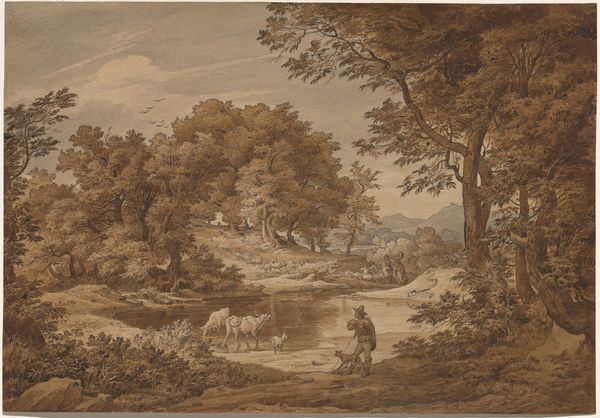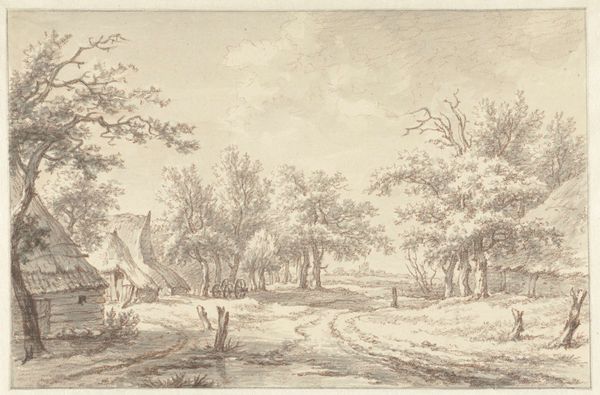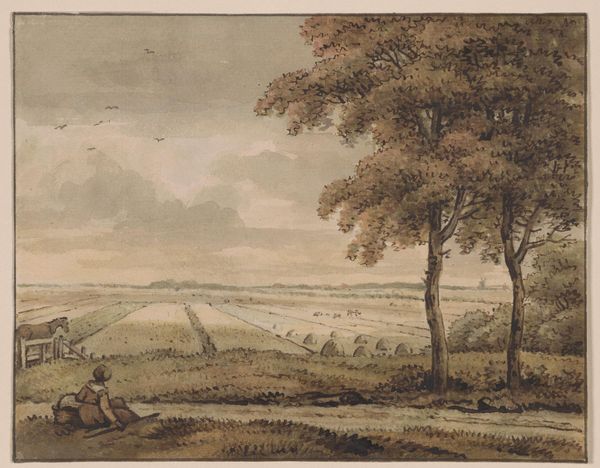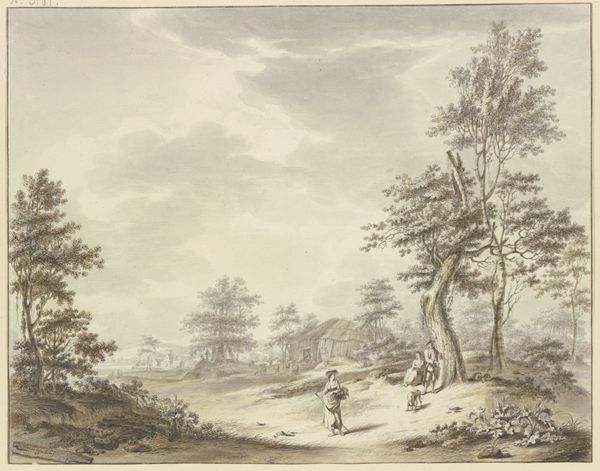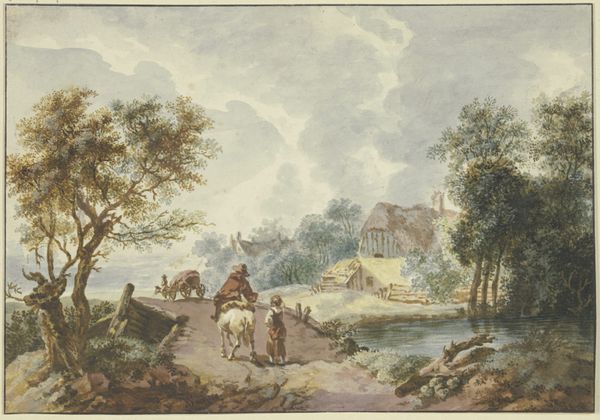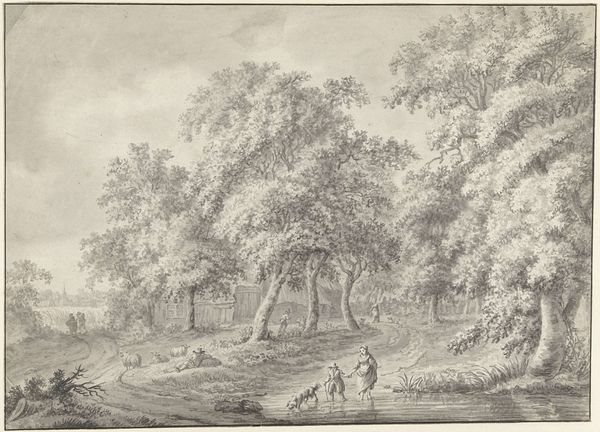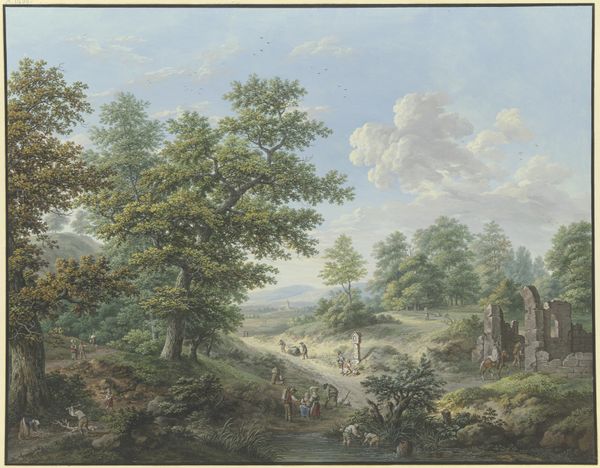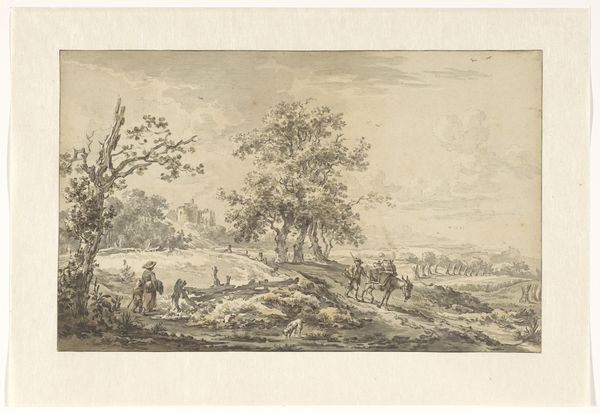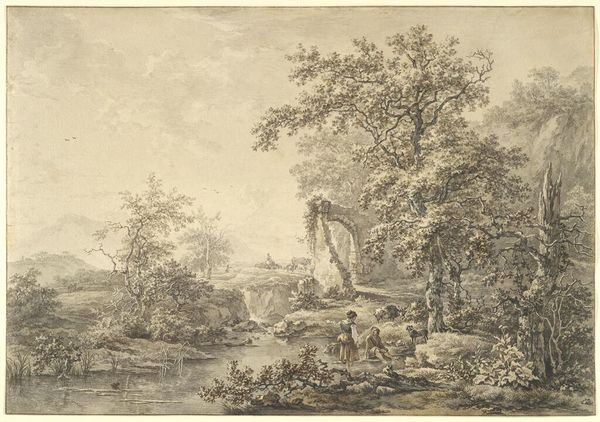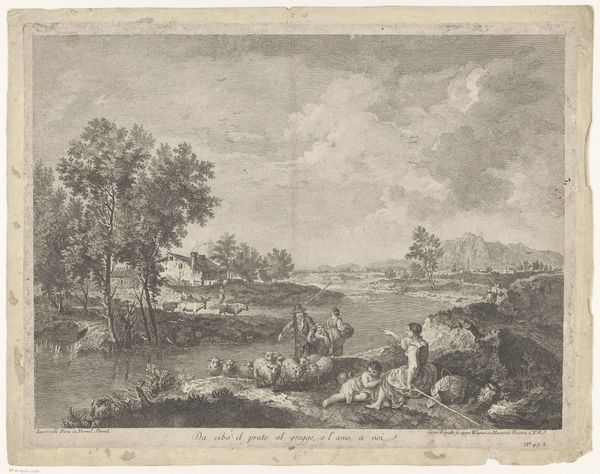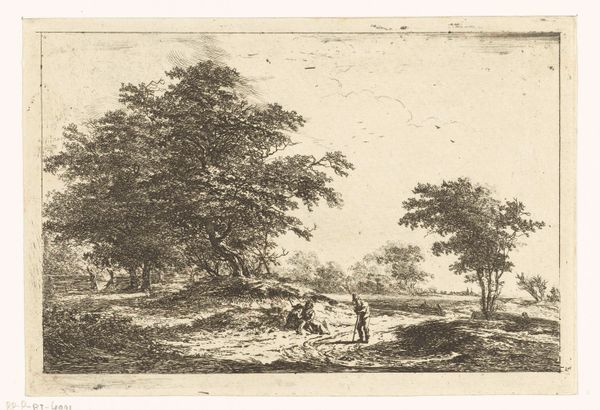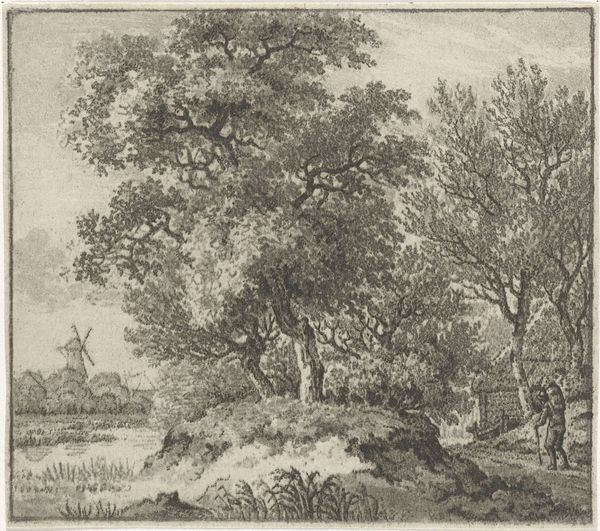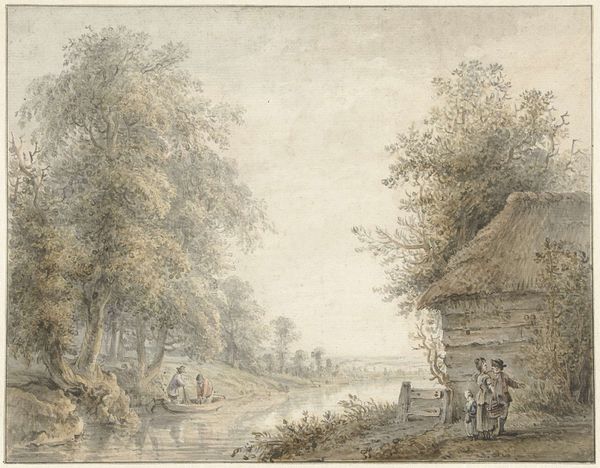
Heuvellandschap met varkenshoeder en andere stoffage, een rivier in de verte 1791
0:00
0:00
jacobcats
Rijksmuseum
plein-air, watercolor
#
plein-air
#
landscape
#
watercolor
#
romanticism
#
genre-painting
#
watercolor
Dimensions: height 295 mm, width 397 mm
Copyright: Rijks Museum: Open Domain
Editor: Here we have "Heuvellandschap met varkenshoeder en andere stoffage, een rivier in de verte" or "Hilly landscape with swineherd and other staffage, a river in the distance" by Jacob Cats, painted in 1791. It’s a watercolor piece and evokes a quiet, pastoral mood. What do you see in this work? Curator: I see a carefully constructed vision of rural life that tells a complex story. Cats, working during a period of significant social and political upheaval, seems to be engaging in a form of nostalgic idealization. We see the natural world carefully rendered and populated by seemingly content figures. But whose content is this painting really serving? Is it reflecting the realities of agrarian life for all members of society, or is it masking disparities and struggles through this picturesque scene? Editor: That’s interesting! I hadn’t thought about it that way. The landscape seemed pretty straightforward. Curator: Consider the romanticism movement, a lens through which we can explore the underrepresentation, and often misrepresentation, of many people. To fully understand this work, we must explore the identity, or lack thereof, of the many people written out of these seemingly gentle narratives. It is the unasked questions, those pertaining to intersectional, historic identities that we often discover so much richness within artwork of this era. Editor: So you’re saying it is crucial to look beyond the pretty scenery to question the power dynamics and social contexts shaping this idyllic representation? Curator: Precisely. Art isn’t made in a vacuum, and Cats, even in his landscapes, participates in a dialogue about societal norms, conscious or unconscious. Exploring art using contemporary intersectional lenses adds so many valuable perspectives, and challenges us to question whose stories were and were not valued at any given point. Editor: This really makes me think about the role of the artist and how their position in society inevitably informs their work. Thanks for opening my eyes to that! Curator: My pleasure! It is in these challenging and crucial contemporary interrogations, that allow art of the past, speak volumes to today.
Comments
No comments
Be the first to comment and join the conversation on the ultimate creative platform.
